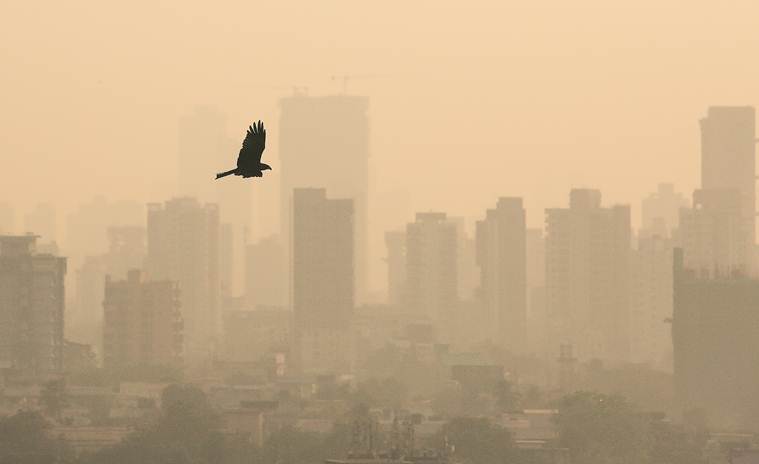Written by Kanika Chawla |Updated: November 24, 2018 1:23:13 am
Clearing the Air
The Great Smog of India begins by clearly calling out the apathy, making all of us complicit in its severe ill effects to human health, quality of life, economic growth, and India’s soft power.

Title: The Great Smog of India
Author: Siddharth Singh
Publisher: Penguin Viking
Pages: 272
Price: 499
Author: Siddharth Singh
Publisher: Penguin Viking
Pages: 272
Price: 499
In Delhi, the festive season is also the season of itchy eyes, coughing fits and unrelenting headaches. Year-on-year, air quality in Delhi nose-dives drastically come mid-October, routinely accompanied by government scrambling, political defensiveness, and widespread public apathy. Amid this, Siddharth Singh’s recent book, The Great Smog of India, is not just topical but also unique in the integrated view it takes on the complex issue of air pollution. Singh’s book is well-researched, referencing some of the leading scientific evidence available in the space from across disciplines and geographies. But it is more than just a summary of good research. It brings the research to the dinner table, making it chewable for all interested readers.
The Great Smog of India begins by clearly calling out the apathy, making all of us complicit in its severe ill effects to human health, quality of life, economic growth, and India’s soft power. Singh doesn’t mince his words when he claims air pollution to be as much a social and political problem, as it is a technological one. That claim isn’t necessarily novel, but the parallel he draws between the silence around the issue of air pollution mirroring the sinister silence with which air pollution gnaws away at us is deeply compelling.
While the book focuses on India, specifically on northern India and the meteorology of Delhi, and its role in our current air quality crisis, it also provides an interesting insight into the economic history of India. Singh weaves in several first principles of economics and pays homage to the greats, from Nicholas Gregory Mankiw to Amartya Sen, PC Mahalanobis, Ronald Coase and Arthur Cecil Pigou. He cleverly narrates the history of economic progress along with the associated energy politics of each phase of growth. The book presents the skewed incentive structures at play, but decisively states that the costs to inaction remain critically high. Acknowledging, and complimenting, the recent strides made by the government in addressing energy poverty through a mammoth electrification programme, scaling up the deployment of renewable energy, and advancing the transition to cleaner cooking fuels, the book also calls for action. Singh writes, “The task before the government is clear: use every tool available — including legislation, regulation, financial instruments, taxes, subsidies, and diplomacy — to clean up the air, both indoors and outdoors.” Even as the book discusses possible actions under each of these categories, it also instills a sense of foreboding — until the politics around air pollution, and its contributors, doesn’t change, it is unlikely that we will see any improvement in the coming years.
With dedicated sections on industry, mobility, and agriculture (residue), the book takes a keen look at the political economy of the sectors that are the principal culprits of the “great smog”. However, it is when Singh talk about the administrative lethargy, and political mud-slinging around tackling air pollution, that the real culprit is revealed. Despite the judicial institutions, right from the Supreme Court to the National Green Tribunal, playing their part and often forcing the hand of government departments, the administrative apathy, infighting, and resistance to change is deeply worrying. The cynics among us may not be surprised. Is this not how things are in India? Think again. The one lesson to take away from the book is that the scale and severity of the problem is well beyond what most of us have comprehended or internalised. Locking ourselves up in purified air sanctuaries and then disengaging with the debate will not do any longer. We have to act, together and now.
The Great Smog of India ends with a toolkit of how to think about air pollution. The 10-point guide helps navigate the science, law, medicine, economics and governance of air pollution. Once again reiterating and amplifying his call to action, Singh writes, “Only an ‘all of the above’ strategy will work’’ to tackle air pollution. Our fundamental rights and basic freedoms are contingent on targeting every single contributor of air pollution, big or small, aggressively and simultaneously. Making allowances for religious sentiments, as with Diwali firecrackers, or for agrarian productivity, as with stubble burning, would be myopic. In its conclusion, the book delivers a strong economy-wide message of how collective, comprehensive, and strategic action to address air pollution can result in economic growth, enhanced productivity, and a significantly smaller healthcare bill.
The book does not necessarily add significantly to the body of research that exists on air pollution, but it weaves narratives that deliver a blow to our inertia of inaction. It is not often that one reads a book that is balanced and equanimous in its tone, and yet leaves one terrified. The Great Smog does this effectively.
Kanika Chawla is senior programme lead at the Council on Energy, Environment and Water , New Delhi






















No hay comentarios:
Publicar un comentario